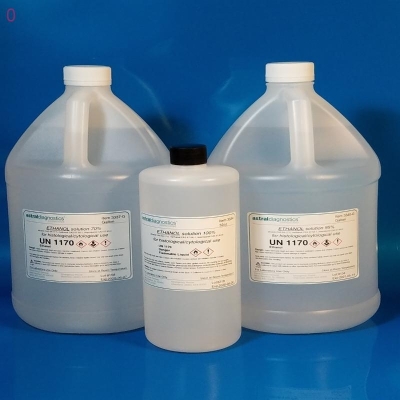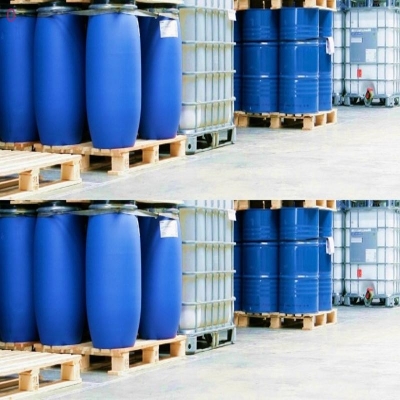-
Categories
-
Pharmaceutical Intermediates
-
Active Pharmaceutical Ingredients
-
Food Additives
- Industrial Coatings
- Agrochemicals
- Dyes and Pigments
- Surfactant
- Flavors and Fragrances
- Chemical Reagents
- Catalyst and Auxiliary
- Natural Products
- Inorganic Chemistry
-
Organic Chemistry
-
Biochemical Engineering
- Analytical Chemistry
- Cosmetic Ingredient
-
Pharmaceutical Intermediates
Promotion
ECHEMI Mall
Wholesale
Weekly Price
Exhibition
News
-
Trade Service
On November 3, at the eighth environmental tea house with the theme of "carrying out supervision and assistance to reduce VOCs emissions" jointly organized by the Publicity and Education Center of the Ministry of Ecology and Environment and the China Environmental Records Association in Beijing, the relevant person in charge of the Ministry of Ecology and Environment introduced This summer, the Ministry of Ecology and Environment organized five rounds of the blue sky defense war and precise assistance in summer VOCs pollution prevention and control.
The results show that VOCs emissions from petrochemical, chemical, and oil storage, transportation and marketing companies are more prominent.
It is difficult for chemical companies to manage VOCs.
Li Tianwei, the inspector of the Eco-Environment Enforcement Bureau of the Ministry of Ecology and Environment, who participated in supervision and assistance, said that from July 15 to September 22 this year, the Ministry of Ecology and Environment organized five rounds of blue sky defense.
Precise assistance in summer VOCs pollution prevention and control, involving 82 cities in the Beijing-Tianjin-Hebei and surrounding areas, the Fenwei Plain, the junction of Jiangsu, Anhui, Shandong and Henan, the Yangtze River Delta, the middle reaches of the Yangtze River, and the Pearl River Delta, focusing on petrochemical, chemical, and industrial coatings , Packaging and printing, and oil storage, transportation and marketing, and selected key counties with a high potential for reducing VOCs by nearly 30%, focusing on 300 typical parks, more than 3,200 characteristic industrial clusters, and the top VOCs emissions of each city.
100 key enterprises.
Li Tianwei mentioned that during the survey, the Ministry of Ecology and Environment found 33,000 companies with environmental problems, accounting for 28% of all companies, and a total of various VOCs problems were discovered 10.
50,000.
In terms of regions and cities, companies in the Pearl River Delta, Yangtze River Delta, and the middle reaches of the Yangtze River have a relatively high proportion of companies with environmental problems.
Among them, problem companies accounted for 74% of the oil and gas storage industry, chemical companies with problems accounted for 50%, and petrochemical companies accounted for 42%.
Among the types of problems, 32% are related to organized emissions of VOCs, 25% are related to unorganized emissions of VOCs, 20% are problems in the storage and transportation of VOCs, and 22% are unqualified in ledger records.
"Many companies do not have installation operation records.
Some companies have a ledger with three or five pages of paper there, and some companies don't even have a ledger.
In addition, Hongyuan Coal Coke Chemical Co.
, Ltd.
storage tank breathing valve is not installed and collected Treatment facilities have become a typical case of unorganized emissions of VOCs.
" Li Tianwei said.
There are four major causes of the problem.
Li Tianwei said that there are four root causes of these VOCs problems.
First, there is a gap between government functions and the implementation of corporate responsibilities.
The main responsibility of related enterprises is not well understood, and the awareness of VOCs governance and management measures are insufficient.
There are many categories of VOCs emissions involved, and there are more small and medium-sized enterprises involved, but most small and medium-sized enterprises have obvious insufficient understanding of VOCs.
The content of VOCs in the raw and auxiliary materials used by them, the production and discharge nodes of VOCs, and the operation of treatment facilities The situation and governance effects are not well understood or grasped.
Second, the problems of pollution control facilities are concentrated, the design and installation of pollution control facilities are generally not standardized, and the collection rate is low; there is a lack of effective monitoring methods, and the equipment operation rate is low; inefficient process facilities flood the market and the treatment rate is low.
Obviously short board.
Many companies’ VOCs governance facilities are still at the level of “do they have” or “not on the top”, thinking that they have the facilities to be good.
There are generally unsound management systems, unestablished operating procedures, insufficient personnel and technical capabilities, and operation management.
Poor and other issues.
Including many companies are not aware of the need for replacement of activated carbon and photooxygen tubes, and even the problem of not installing activated carbon in activated carbon adsorption facilities.
Third, the supervision foundation is weak.
On the one hand, the company's VOCs management base is unclear; On the other hand, no accurate and practical list of VOCs corporate pollution sources has been established.
Moreover, the third-party testing market is also chaotic, and the government lacks proper supervision on it.
According to the "Atmospheric Law", most companies monitor VOCs emissions by a third party.
However, due to the chaos in the third-party testing market, the monitoring threshold is very low.
The local government has no regulatory and penalties for this, so the monitoring is falsified.
The phenomenon is very prominent.
The fourth is the lack of scientific and technological support.
The first is the relative lag in standard revision.
From an industry perspective, the organized emission of VOCs in most industries still implements the comprehensive emission standards for air pollutants, but this standard has not been revised for many years, and the standard value is relatively loose, which is difficult to meet the needs of current management.
From the point of view of process links, some key industries have relatively large emissions processes that have not yet been included in the scope of industry standard control.
For example, the coke cutting process of delayed coking equipment in the petrochemical industry has large VOCs emissions, but such process links are not controlled in the current industry standards.
From the point of view of pollution factors, in the existing standards of petroleum refining and petrochemical industry, there is no separate differentiated management limit requirement for industrial characteristic pollutants such as olefins, aromatics and alkanes with high ozone generation potential.
"One size fits all" management is not conducive to precise control of the industry.
In addition, due to the lack of feasible technical guidelines for VOCs governance, there is a lack of authoritative guidance for VOCs governance.
In addition, some standard and normative supporting mechanisms are not perfect, which also makes local governments at a loss what to do in actual operations.
Taking multiple measures to make up for the lack of governance.
Li Tianwei pointed out that in order to further make up for the problems and deficiencies in the governance of VOCs, the petrochemical industry must raise awareness and implement responsibilities.
Under China's current system, if the local government's understanding is not in place, the main responsibility of the enterprise will not be strengthened, and a lot of supervision and inspection work will definitely be stale.
It is necessary to further raise the awareness of local governments, clarify the responsibilities between departments, consolidate the main responsibilities of enterprises, and clarify the time limit and target task requirements of VOCs governance.
At the same time, the government should strengthen classification management and scientific assistance and guidance in accordance with the characteristics of VOCs in different industries, such as numerous sources, complex components, diverse governance technologies, large differences in applicability, technical choices and high requirements for system compatibility.
In addition, it is imperative to strengthen technological protection.
It is necessary to strengthen technological innovation and technological progress, and improve the technological support capacity for the prevention and control of VOCs pollution; It is imperative to improve the ability to find and solve problems.
"During the '14th Five-Year Plan' period, it is necessary to give full play to economic policy tools to achieve precise governance of VOCs.
It is necessary to improve tax and price policies and increase financial support.
Without policy innovation, the rectification of VOCs will be implemented.
It is very difficult.
In addition, we must innovate, improve, and practice supervision to help new ways.
We must also comprehensively consolidate the basis for ozone substance prevention and control, including the research foundation, incentive measures, and revision of standards and regulations, especially the shortcomings of ecological environment supervision and monitoring and law enforcement capabilities.
It must be made up.
Otherwise, the foundation will not be firmly shaken.
" Li Tianwei said.
It is understood that the Ministry of Ecology and Environment has to "look back" on the effect of supervision and assistance this summer.
The first is to see whether the rectification and reform of important issues is "do not work", and the second is to see whether the local commitments and corporate commitments are "reformed or not", and whether there are any new problems.
"In order to enhance the awareness of VOCs governance in petrochemical, chemical, oil refining, storage, transportation and marketing companies, in addition to government supervision and assistance, the problems that companies are prone to should also be disclosed to the public, so that the whole society can participate in the supervision of corporate emissions, and urge companies to conduct self-inspection.
Self-correction to achieve independent emission reduction.
" said Ma Jun, director of the Beijing Public and Environmental Research Center.
The results show that VOCs emissions from petrochemical, chemical, and oil storage, transportation and marketing companies are more prominent.
It is difficult for chemical companies to manage VOCs.
Li Tianwei, the inspector of the Eco-Environment Enforcement Bureau of the Ministry of Ecology and Environment, who participated in supervision and assistance, said that from July 15 to September 22 this year, the Ministry of Ecology and Environment organized five rounds of blue sky defense.
Precise assistance in summer VOCs pollution prevention and control, involving 82 cities in the Beijing-Tianjin-Hebei and surrounding areas, the Fenwei Plain, the junction of Jiangsu, Anhui, Shandong and Henan, the Yangtze River Delta, the middle reaches of the Yangtze River, and the Pearl River Delta, focusing on petrochemical, chemical, and industrial coatings , Packaging and printing, and oil storage, transportation and marketing, and selected key counties with a high potential for reducing VOCs by nearly 30%, focusing on 300 typical parks, more than 3,200 characteristic industrial clusters, and the top VOCs emissions of each city.
100 key enterprises.
Li Tianwei mentioned that during the survey, the Ministry of Ecology and Environment found 33,000 companies with environmental problems, accounting for 28% of all companies, and a total of various VOCs problems were discovered 10.
50,000.
In terms of regions and cities, companies in the Pearl River Delta, Yangtze River Delta, and the middle reaches of the Yangtze River have a relatively high proportion of companies with environmental problems.
Among them, problem companies accounted for 74% of the oil and gas storage industry, chemical companies with problems accounted for 50%, and petrochemical companies accounted for 42%.
Among the types of problems, 32% are related to organized emissions of VOCs, 25% are related to unorganized emissions of VOCs, 20% are problems in the storage and transportation of VOCs, and 22% are unqualified in ledger records.
"Many companies do not have installation operation records.
Some companies have a ledger with three or five pages of paper there, and some companies don't even have a ledger.
In addition, Hongyuan Coal Coke Chemical Co.
, Ltd.
storage tank breathing valve is not installed and collected Treatment facilities have become a typical case of unorganized emissions of VOCs.
" Li Tianwei said.
There are four major causes of the problem.
Li Tianwei said that there are four root causes of these VOCs problems.
First, there is a gap between government functions and the implementation of corporate responsibilities.
The main responsibility of related enterprises is not well understood, and the awareness of VOCs governance and management measures are insufficient.
There are many categories of VOCs emissions involved, and there are more small and medium-sized enterprises involved, but most small and medium-sized enterprises have obvious insufficient understanding of VOCs.
The content of VOCs in the raw and auxiliary materials used by them, the production and discharge nodes of VOCs, and the operation of treatment facilities The situation and governance effects are not well understood or grasped.
Second, the problems of pollution control facilities are concentrated, the design and installation of pollution control facilities are generally not standardized, and the collection rate is low; there is a lack of effective monitoring methods, and the equipment operation rate is low; inefficient process facilities flood the market and the treatment rate is low.
Obviously short board.
Many companies’ VOCs governance facilities are still at the level of “do they have” or “not on the top”, thinking that they have the facilities to be good.
There are generally unsound management systems, unestablished operating procedures, insufficient personnel and technical capabilities, and operation management.
Poor and other issues.
Including many companies are not aware of the need for replacement of activated carbon and photooxygen tubes, and even the problem of not installing activated carbon in activated carbon adsorption facilities.
Third, the supervision foundation is weak.
On the one hand, the company's VOCs management base is unclear; On the other hand, no accurate and practical list of VOCs corporate pollution sources has been established.
Moreover, the third-party testing market is also chaotic, and the government lacks proper supervision on it.
According to the "Atmospheric Law", most companies monitor VOCs emissions by a third party.
However, due to the chaos in the third-party testing market, the monitoring threshold is very low.
The local government has no regulatory and penalties for this, so the monitoring is falsified.
The phenomenon is very prominent.
The fourth is the lack of scientific and technological support.
The first is the relative lag in standard revision.
From an industry perspective, the organized emission of VOCs in most industries still implements the comprehensive emission standards for air pollutants, but this standard has not been revised for many years, and the standard value is relatively loose, which is difficult to meet the needs of current management.
From the point of view of process links, some key industries have relatively large emissions processes that have not yet been included in the scope of industry standard control.
For example, the coke cutting process of delayed coking equipment in the petrochemical industry has large VOCs emissions, but such process links are not controlled in the current industry standards.
From the point of view of pollution factors, in the existing standards of petroleum refining and petrochemical industry, there is no separate differentiated management limit requirement for industrial characteristic pollutants such as olefins, aromatics and alkanes with high ozone generation potential.
"One size fits all" management is not conducive to precise control of the industry.
In addition, due to the lack of feasible technical guidelines for VOCs governance, there is a lack of authoritative guidance for VOCs governance.
In addition, some standard and normative supporting mechanisms are not perfect, which also makes local governments at a loss what to do in actual operations.
Taking multiple measures to make up for the lack of governance.
Li Tianwei pointed out that in order to further make up for the problems and deficiencies in the governance of VOCs, the petrochemical industry must raise awareness and implement responsibilities.
Under China's current system, if the local government's understanding is not in place, the main responsibility of the enterprise will not be strengthened, and a lot of supervision and inspection work will definitely be stale.
It is necessary to further raise the awareness of local governments, clarify the responsibilities between departments, consolidate the main responsibilities of enterprises, and clarify the time limit and target task requirements of VOCs governance.
At the same time, the government should strengthen classification management and scientific assistance and guidance in accordance with the characteristics of VOCs in different industries, such as numerous sources, complex components, diverse governance technologies, large differences in applicability, technical choices and high requirements for system compatibility.
In addition, it is imperative to strengthen technological protection.
It is necessary to strengthen technological innovation and technological progress, and improve the technological support capacity for the prevention and control of VOCs pollution; It is imperative to improve the ability to find and solve problems.
"During the '14th Five-Year Plan' period, it is necessary to give full play to economic policy tools to achieve precise governance of VOCs.
It is necessary to improve tax and price policies and increase financial support.
Without policy innovation, the rectification of VOCs will be implemented.
It is very difficult.
In addition, we must innovate, improve, and practice supervision to help new ways.
We must also comprehensively consolidate the basis for ozone substance prevention and control, including the research foundation, incentive measures, and revision of standards and regulations, especially the shortcomings of ecological environment supervision and monitoring and law enforcement capabilities.
It must be made up.
Otherwise, the foundation will not be firmly shaken.
" Li Tianwei said.
It is understood that the Ministry of Ecology and Environment has to "look back" on the effect of supervision and assistance this summer.
The first is to see whether the rectification and reform of important issues is "do not work", and the second is to see whether the local commitments and corporate commitments are "reformed or not", and whether there are any new problems.
"In order to enhance the awareness of VOCs governance in petrochemical, chemical, oil refining, storage, transportation and marketing companies, in addition to government supervision and assistance, the problems that companies are prone to should also be disclosed to the public, so that the whole society can participate in the supervision of corporate emissions, and urge companies to conduct self-inspection.
Self-correction to achieve independent emission reduction.
" said Ma Jun, director of the Beijing Public and Environmental Research Center.







